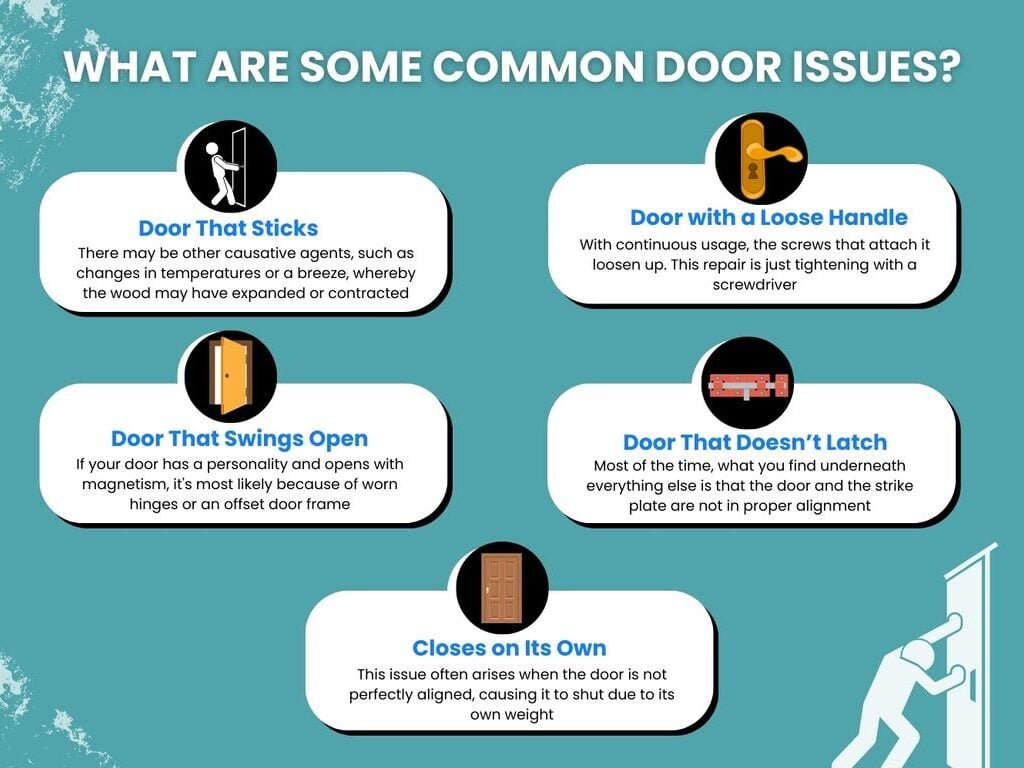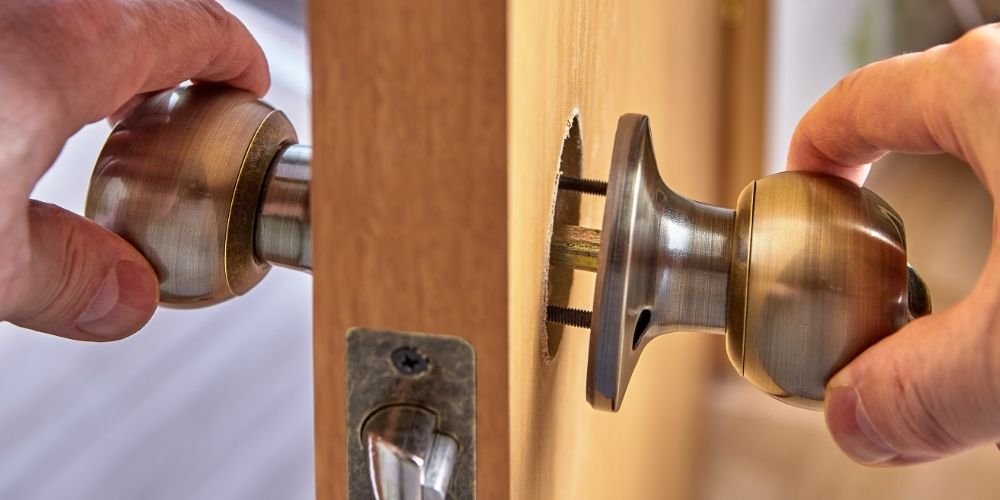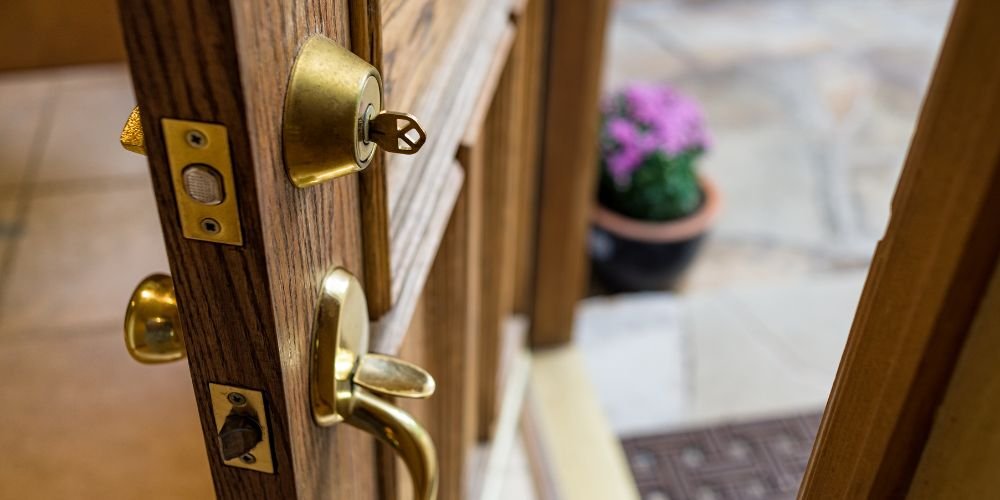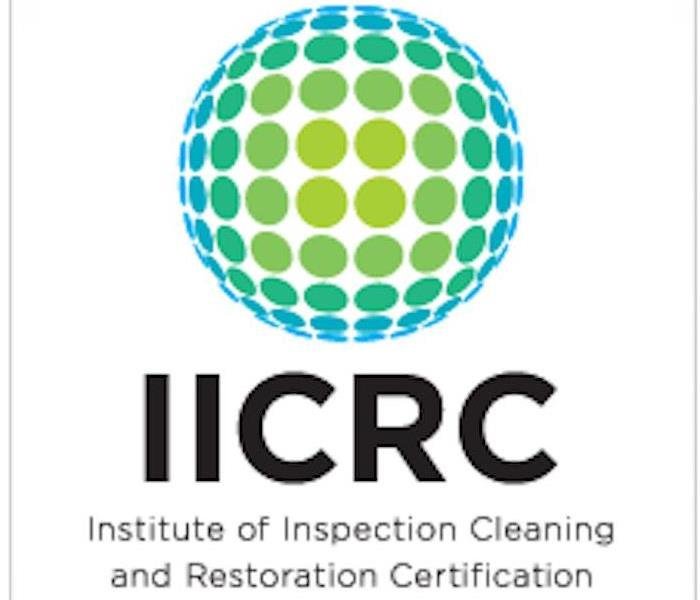As common as sticking, creaking, or even non-latching doors are, they irritate most of us. All this, however, always happens and inconveniences one. Most of these flaws don’t need you calling for professional help but can easily be rectified by a do-it-yourself person like yourself. You will save both time and money, not to mention the feeling of satisfaction when dealing with these minor door and window repairs on your own.
Some of the Common Door Problems
When a door sticks, sand the edges of the door with sandpaper. It will help eliminate any harsh spots that may cause the door to stick. If the door makes noise due to friction, spray some WD-40 or oil on the hinges to reduce that friction. Check if the screws that hold the plate with the latch have loosened if the door doesn’t manage to close, you will have to tighten them. It means the strike plate should be appropriately aligned so the door shuts properly.

1. Door That Sticks
One common challenge affecting many homeowners is having a sticking door. There may be other causative agents, such as changes in temperatures or a breeze, whereby the wood may have expanded or contracted, among others, which may make the door misaligned. You may begin to repair a sticking door by first checking for any loose screws on the hinges.
2. Door with a Loose Handle
A loose door handle is unsightly and even unsafe. With continuous usage, the screws that attach it loosen up. This repair is just tightening with a screwdriver. If the screws are stripped, you might need to place slightly longer screws for a better grip.
3. Door That Swings Open
If your door has a personality and opens with magnetism, it’s most likely because of worn hinges or an offset door frame. The first way to diagnose this problem is by looking for worn or damaged hinges. If the hinges are loose, then just screw them tighter, and sometimes you can even replace them. If it is because of a misaligned door frame, you may align it using shims thus aligned in a manner that enables the door to shut.
4. Closes on Its Own
Dealing with a door that closes on its own can be quite frustrating. This issue often arises when the door is not perfectly aligned, causing it to shut due to its weight.
5. Door With a Dent
Dents in a door are unattractive and could compromise the door’s strength. This method utilizes a moistened cloth and a hot iron to steam out a ding in a wood door. Lay a dampened cloth across the ding. Now iron in a circular motion—back and forth across the top of the fabric—with a hot iron. As long as the iron is sufficiently hot to generate steam off the fabric, it will lift the wood fibers and fill the ding.
6. Door That Doesn’t Latch
What Caused It: Failures of latches can mean a traumatic deal associated with lost privacy/security. Most of the time, what you find underneath everything else is that the door and the strike plate are not in proper alignment. If a door is binding and won’t catch, you adjust the setting of the strike plate. You can do this by backing off the screws, holding it onto the jamb, and changing its position. Then tighten the screws back up so it’s snug against the jamb. Be sure the hole in the latch lines up with the strike plate.
Also read, How to Install a Door Knob?
How to Fix Your Common Door Issues?
Doors are essential to the functionality and security of your home, but they can develop a variety of common problems over time. Whether it’s a door that sticks, doesn’t latch properly, or swings on its own, these issues can be both frustrating and inconvenient. Know the steps to diagnose and fix common door problems, offering practical tips and solutions to get your doors back in perfect working order.
Door That Sticks
- If a door sticks or has no gap at the top edge, it’s often due to changes in the door frame. Instead of adjusting the frame, trim the door where it sticks by marking the spot, removing the door, and using a block plane.
- For sticking on the latch-side edge, check if the top hinge screws are loose. Tighten them, or replace them with larger screws if needed.
- If the door sticks at the bottom edge, it’s usually because the lower jamb is loose. Remove and re-screw the jamb to secure it, which should raise the door and resolve the sticking issue and if these doesn’t help then go for a door repair.
Door with a Loose Handle

To fix a door with a loose handle, tighten the screws on the handle using a screwdriver. If the screws are stripped, replace them with longer ones or use wood filler in the holes before re-screwing. This should secure the handle firmly in place.
Read, How Are Doors Installed Over Cavity Walls?
Door That Swings Open
To fix a door that swings open, tighten the hinge screws or slightly bend the hinge pin. You can remove a hinge pin and tap it gently with a hammer to add a slight curve, which will create more resistance and keep the door in place. Lubricating the hinges with silicone-based grease can also reduce friction. Doing this will guarantee that the door won’t open by itself.
Door With a Dent
For a metallic-surfaced door with a dent, gently tap it back out from the inside using a rubber mallet. Start by cleaning the area. For minor dents, use a plunger or suction cup to pull it out. For deeper dents, apply body filler, sand it smooth, and repaint. If the damage is significant, it may be best to consult a professional.
Door That Doesn’t Latch
If your door latch doesn’t stay shut, making it hard to close or keep closed, there are two simple fixes. First, you can replace the latch set with just a screwdriver and a new latch plate, which you can find at most hardware stores. Alternatively, you can enlarge the hole in the strike plate using a mill file, which is often necessary when doors settle over time. Both methods are quick and easy to do!
Final Thoughts
To keep your doors working smoothly, it’s essential to address minor issues before they become bigger problems. With the right tools and expert tips from Mr. Fixer Home Services, you’ll be ready to handle any door repair with ease. A little maintenance now can save you from costly repairs later. So, while DIY fixes are great for minor issues, don’t hesitate to seek professional help when needed to keep everything running smoothly!








